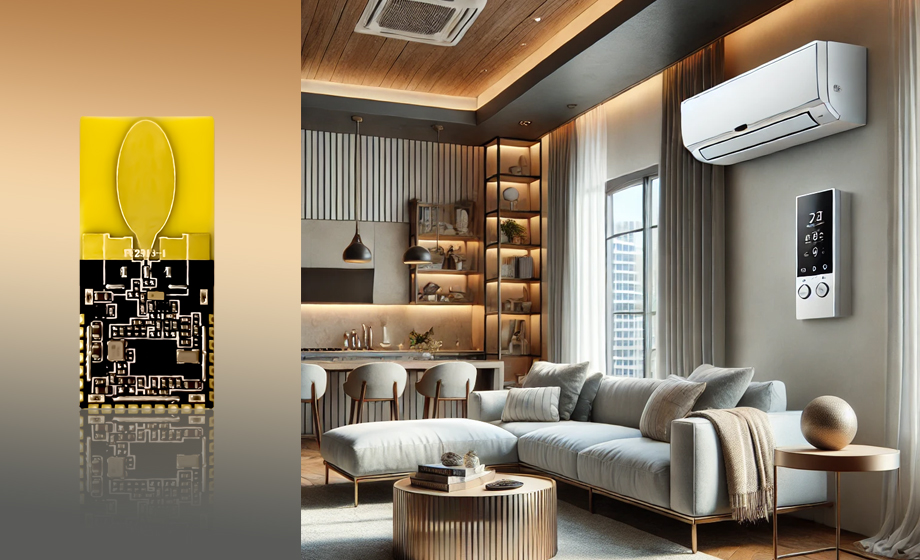I. Introduction
In the rapid development of modern communication and positioning technology, ultra wideband (UWB) technology has gradually emerged with its unique advantages. Uwb technology has been widely used in many fields because of its high speed, high precision and low power consumption. Especially in the short-range module, UWB positioning technology plays an important role. In this paper, the working principle, application cases and market prospects of uwb short-range module and UWB signal receiving module will be discussed in depth, in order to provide readers with a comprehensive and in-depth understanding.

Second, ultra-wideband positioning technology principle
Ultra wideband positioning technology is a kind of high precision positioning technology based on the principle of time difference or arrival Angle measurement. It makes use of the characteristics of ultra-wideband signal transmission speed and high time resolution, by measuring the time difference or arrival Angle of signal propagation in space, to achieve accurate target positioning. Compared with traditional positioning technology, UWB positioning technology has higher positioning accuracy and shorter response time, and is suitable for indoor, outdoor and other environments.
Third, uwb short-range module working principle
The short range module is a device for distance measurement using UWB technology. It calculates the distance between the target and the ranging module by transmitting the ultra-wideband signal and receiving the reflected signal, measuring the time difference between the signal propagation. uwb short-range range module has the characteristics of high precision, high stability and strong anti-interference ability, and is widely used in unmanned driving, robot navigation, smart home and other fields.
Four, ultra wideband signal receiving module design
The UWB signal receiving module is the core part of the short range module, which is responsible for receiving and processing UWB signals. In terms of hardware composition, the receiving module usually includes an antenna, RF front end, analog-to-digital converter and other parts for receiving and converting ultra-wideband signals. In the aspect of software design, the receiving module needs to realize the functions of signal demodulation, decoding and data processing to extract useful positioning information. In addition, the performance indicators of the receiving module, such as sensitivity and dynamic range, are also important factors to be considered in the design process.
5. Application case analysis
Indoor positioning: In indoor places such as shopping malls and museums, ultra-wideband positioning technology can achieve accurate positioning of people and objects. By deploying the short-range module and the signal receiving module, the indoor positioning system can be built to provide users with navigation, location query and other services.
Driverless: In the field of driverless cars or drones, ultra-wideband positioning technology can be used to achieve high-precision autonomous navigation and obstacle avoidance. By combining with other sensors and algorithms, the safety and reliability of unmanned systems can be improved.
Internet of Things: In the field of Internet of Things, ultra-wideband positioning technology can be used to achieve accurate positioning and remote control of devices. By combining ultra-wideband positioning technology with sensor networks, intelligent iot systems can be built to improve device management and operational efficiency.
6. Market prospects and challenges
With the rapid development of the Internet of Things, smart home and other fields, the market demand for uwb ultra-wideband positioning technology continues to grow. It is expected that in the next few years, ultra-wideband positioning technology will be applied in more fields, and the market scale will continue to expand. However, the current ultra-wideband positioning technology still faces some challenges, such as high cost and insufficient standardization. In order to promote the further development of ultra-wideband positioning technology, it is necessary to increase R&D investment, improve the technical level, reduce production costs, and strengthen the docking with international standards.
Vii. Conclusion
uwb ultra-wideband positioning technology has shown great application potential in many fields with its advantages of high precision, high stability and low power consumption. By deeply studying the working principle and application cases of uwb short-range module and UWB signal receiving module, we can better understand the characteristics and advantages of this technology. In the future, with the continuous progress of technology and the continuous expansion of application scenarios, ultra-broadband positioning technology will bring more convenience and innovation to people's lives.



